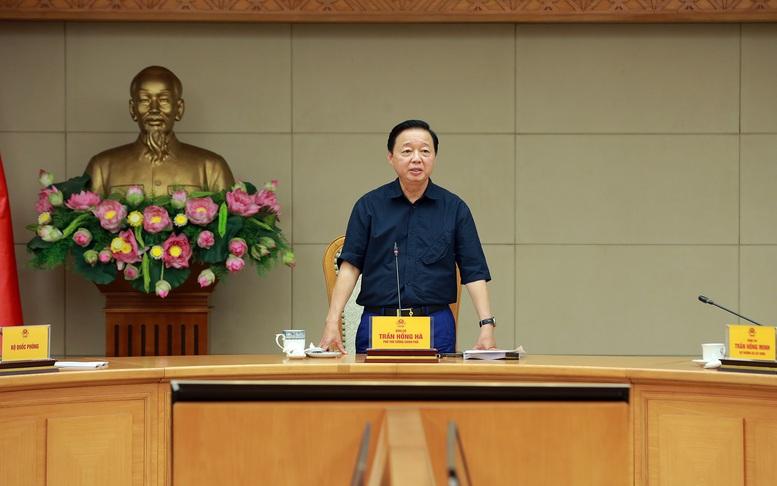
The Deputy Prime Minister requested the drafting agency ( Ministry of Construction ) to closely follow the viewpoints and policies of the Party and State, especially the institutionalization of new requirements from the arrangement of administrative units and organization of local governments according to the 2-level model.
The Ministry of Construction needs to review the entire current system of regulations, focusing on correcting problems arising from practice, especially the "stuck" points stipulated by the current Construction Law; determined to handle the duplication and overlap between the Construction Law and the Law on Urban and Rural Planning, the Draft Law on Urban Development Management and other laws in the management field. The amendment must aim towards a highly unified and synchronous legal system.
The Deputy Prime Minister noted that difficulties arising from the current Construction Law should be amended immediately; those arising from other laws that have not been amended should be brought here for handling; those related to laws that are being amended (such as the Law on Public Investment, the Law on Investment, the Law on Land, etc.) should be grouped together and transferred to the amendment process of those laws.
Improving management efficiency in construction investment
Reporting at the meeting, Deputy Minister of Construction Bui Xuan Dung said that the drafting of the Law aims to continue to concretize the Party and State's guidelines and policies towards building a favorable, open, transparent, safe legal environment with low compliance costs; improving the investment and business environment; simplifying administrative procedures in investment and construction activities; overcoming limitations and shortcomings in practice; ensuring the synchronization and unity of the legal system.
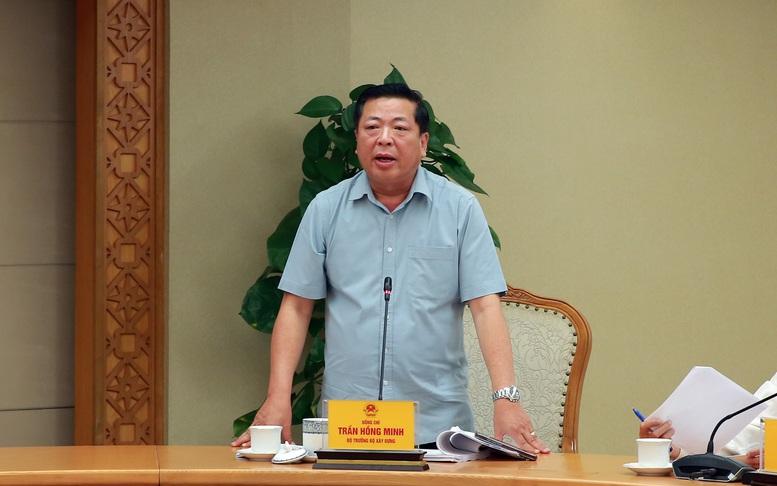
The draft Law is expected to amend and adjust 141/168 articles, rearranged into 8 chapters, 96 articles, focusing on 4 major groups of issues.
One is to innovate methods and improve management efficiency in construction investment.
Switch from classifying projects by capital source to investment form (public investment, public-private partnership, direct business investment), overcoming shortcomings in determining capital sources. Project management form is shortened from 6 to 2 forms (Construction investment project management board and self-management by investors). Clearly define the concept, content, and method of cost management; clarify the preliminary total investment, total investment, construction estimate; linked to each design stage. Supplement tools for estimating norms and construction prices, use flexibly and conveniently. Amend and supplement the content and form of contracts to ensure consistency with the Civil Code and related laws; increase transparency, fairness, and feasibility; simplify procedures, especially contract liquidation.
Supplementing regulations on applying BIM, GIS, and artificial intelligence in the national database system on construction activities; identifying each project from the planning, appraisal, licensing, to acceptance and settlement stages.
Second is to cut down and simplify administrative procedures and investment and business conditions.
The investor can choose the design option depending on the nature and complexity of the project, in order to shorten the procedure.
The specialized agency appraising the project only focuses on construction safety, fire prevention and fighting, compliance with standards, regulations and conformity with planning; other contents are delegated to the investor; instead of two appraisal steps (basic design and post-basic design), there is only one step of appraising the basic design.
Construction permits are exempted for projects whose feasibility study reports have been appraised by specialized agencies; small projects and individual houses without detailed plans still need to apply for permits, which can be done online.
Review and reduce the number of inspection subjects for acceptance work; simplify the conditions for construction commencement.
Abolish the procedure for granting construction capacity certificates to organizations; reduce the fields requiring practice certificates.
Compared to 8 groups of administrative procedures in the current Construction Law, the Draft Law proposes to abolish 3 groups, including: Design appraisal after basic design; granting certificates of construction capacity to organizations; recognizing professional social organizations qualified to grant certificates. The remaining procedures are reduced, simplified and will be specified in detail in the decree guiding the implementation of the law.
Third is decentralization of management from the central to local levels , while at the same time assigning clear responsibilities to entities participating in construction activities, ensuring transparency, efficiency and accountability.
Fourth, only regulates framework issues and principles under the authority of the National Assembly ; detailed regulations are left to the Government to decide.
Deputy Minister Bui Xuan Dung said that the Draft Law has a number of contents that need comments. Specifically, regarding the regulation on norm management, the Ministry of Construction proposed a plan to allow organizations to apply norms issued by state agencies for public investment projects; at the same time, allowing organizations to build, adjust, apply or use construction prices in cases where they do not exist or are not suitable.
Supplementing regulations allowing the competent authority to internally adjust capital between component projects while the total investment, objectives, scale and progress of the entire project remain unchanged, then reporting to competent authorities, in order to reduce procedures.
Proposal for "one-stop, one-lock" in construction appraisal and licensing
Commenting on the Draft Law, the representative of the Ministry of Justice said that the 2014 Construction Law has been adjusted many times, making it difficult to look up and apply, so this time it needs to be comprehensively revised, consolidating previous revisions. The Draft Law must focus on problems within the scope of the Construction Law; separate public and private project management; and at the same time amend regulations on construction contracts and technical contents to ensure feasibility.
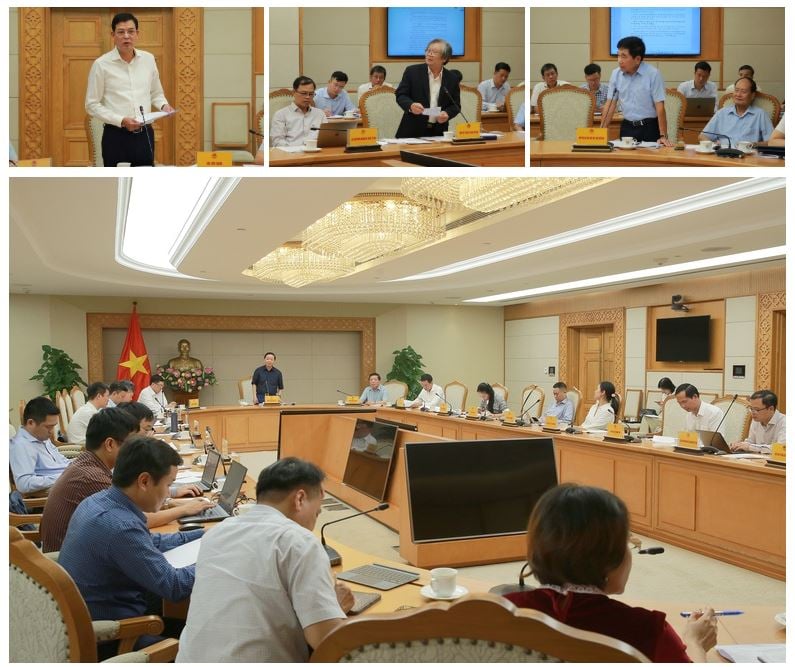
Delegates agreed that the amendment of the Construction Law must be comprehensive and consistent with the Investment Law, the Public Investment Law and related laws, in order to avoid overlaps and loopholes in management. Mr. Le Anh Quan, Vice Chairman of the Hai Phong City People's Committee, pointed out the reality that after the administrative boundary merger, many projects had to stop or change investors, but the Draft has not clarified the payment and settlement procedures. Deputy Director of the Hanoi Department of Construction Luyen Van Phuong's proposal to reform the construction licensing process has also received attention under the "one-door, one-key" mechanism for simultaneous appraisal and shortening the time.
Mr. Hoang Quoc Hiep, Chairman of the Vietnam Association of Construction Contractors, assessed that the draft Law on Construction (amended) has covered non-budgetary activities, ensuring fairness among entities. However, to meet key projects such as high-speed railways and Long Thanh airport, it is necessary to add the concept of "contractor consortium" - a form of association of independent contractors, with different specialties, with a common executive board, instead of the traditional joint venture.
The leaders of the Vietnam Association of Construction Contractors also proposed clarifying the investor's authority to adjust the contract; allowing reference to foreign norms and unit prices; requiring a minimum payment guarantee of 30% of the contract value to protect the contractor and adding payment responsibility to the subcontractor. In addition, it is necessary to unify the warranty regulations between the Construction Law and the Housing Law, and at the same time require project directors and management boards to have a practice certificate.
Eliminate provisions that overlap with other laws
Concluding the meeting, Deputy Prime Minister Tran Hong Ha assessed that the Ministry of Construction had worked responsibly, scientifically, and receptively, absorbing many opinions, creating a high consensus. Leaders, representatives of ministries, branches, localities, and experts contributed in-depth, going straight to the provisions, demonstrating careful research.
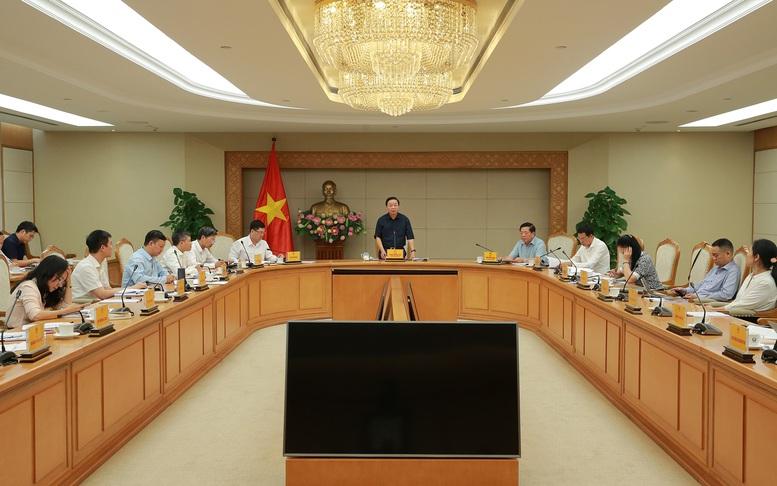
The Ministry of Construction must adhere to the political foundation and direction of the Politburo and the Government; consider the amendment of the Construction Law an urgent task, aiming to institutionalize the policy of decentralization, decentralization, arrangement of administrative units, and reorganization of two-level local governments. The Law needs to be synchronized and unified with related laws such as Land, Planning, and Investment, creating favorable conditions for local implementation.
According to the Deputy Prime Minister, the articles and provisions in the Draft Law need to be classified into 4 groups.
First is the technical editing group, wording to ensure consistency with the 2-level local government model.
The second is the policy change group, which needs to focus on in-depth analysis, especially on issues of decentralization, authority and management techniques.
The third is the group that simplifies administrative procedures, which can cut 50% of the steps and apply the "one-stop, one-file" mechanism.
The fourth group is on the application of information technology and digital data in construction management. "We must remove from the draft regulations that overlap with other laws," said the Deputy Prime Minister.
Encouraging new technology, towards green, smart buildings, digital transformation
Commenting on a number of specific issues, the Deputy Prime Minister suggested that project classification should be based on the nature of the project, the level of technological complexity, and the impact on safety, the environment, and society. "A large urban area with familiar technology is quite different from a bridge with new technology being applied for the first time. The classification must be more realistic."
From there, the determination of management objects needs to focus on three groups: Investors and investment managers; design consultants, supervisors, appraisers; main and subcontractors. Even households and small organizations participating in construction are subjects that must be regulated, linked to contractual responsibilities, payments, warranties and protection of the rights of all parties.
Regarding construction licensing procedures, the Deputy Prime Minister emphasized that this is the final management tool, ensuring that the project meets planning, design, fire prevention and fighting, and environmental requirements. However, it is necessary to shorten the time, avoid overlap, and decentralize while still maintaining national and international standards on the capacity of staff, consulting units, supervisors, and contractors.
"Don't be afraid of the name of the license. The important thing is to reform the process, many procedures in one set of documents, one door, clear authority. If the feasible design documents have fully integrated these contents, then licensing is almost just an affirmation," the Deputy Prime Minister said.
Pointing out the lack of standards, norms and unit prices in the construction sector, which has caused difficulties for both central and local agencies, the Deputy Prime Minister suggested opening a way to consult and apply international standards and technologies of the producing country to fields that have not been issued domestically. This is especially important for new projects such as high-speed railways, highways and airports.
In addition, the Law should allow the use of foreign consultants when domestic capacity is not sufficient, to ensure objectivity and scientificity. The organization of the project management board must also be flexible, avoiding the situation of "not being able to invite consultants, the project is stuck".
To ensure business interests and encourage innovation, the Deputy Prime Minister noted that current regulations on payment and settlement are still inadequate, especially for small and medium-sized enterprises and subcontractors; research should be conducted to replace the regulation on payment only after inspection and audit conclusions, with a binding contract mechanism. The construction warranty period should also be assigned to the Government to flexibly regulate, suitable for each type of project.
At the same time, the Law needs to create space for investors to apply new technology, towards green, smart, digitally transformed buildings. Adjusting total investment and changing technology must be given more initiative to investors, instead of being overly dependent on superiors.
Updated on September 12, 2025
Source: https://laichau.gov.vn/tin-tuc-su-kien/chuyen-de/tin-trong-nuoc/sua-doi-luat-xay-dung-bao-dam-dong-bo-phap-luat-cat-giam-thu-tuc-khuyen-khich-doi-moi.html



![[Photo] Prime Minister Pham Minh Chinh chairs the 16th meeting of the National Steering Committee on combating illegal fishing.](https://vphoto.vietnam.vn/thumb/1200x675/vietnam/resource/IMAGE/2025/10/07/1759848378556_dsc-9253-jpg.webp)

























![[Photo] Super harvest moon shines brightly on Mid-Autumn Festival night around the world](https://vphoto.vietnam.vn/thumb/1200x675/vietnam/resource/IMAGE/2025/10/07/1759816565798_1759814567021-jpg.webp)



































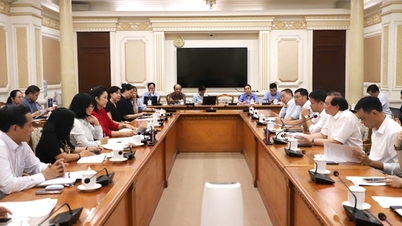
































Comment (0)